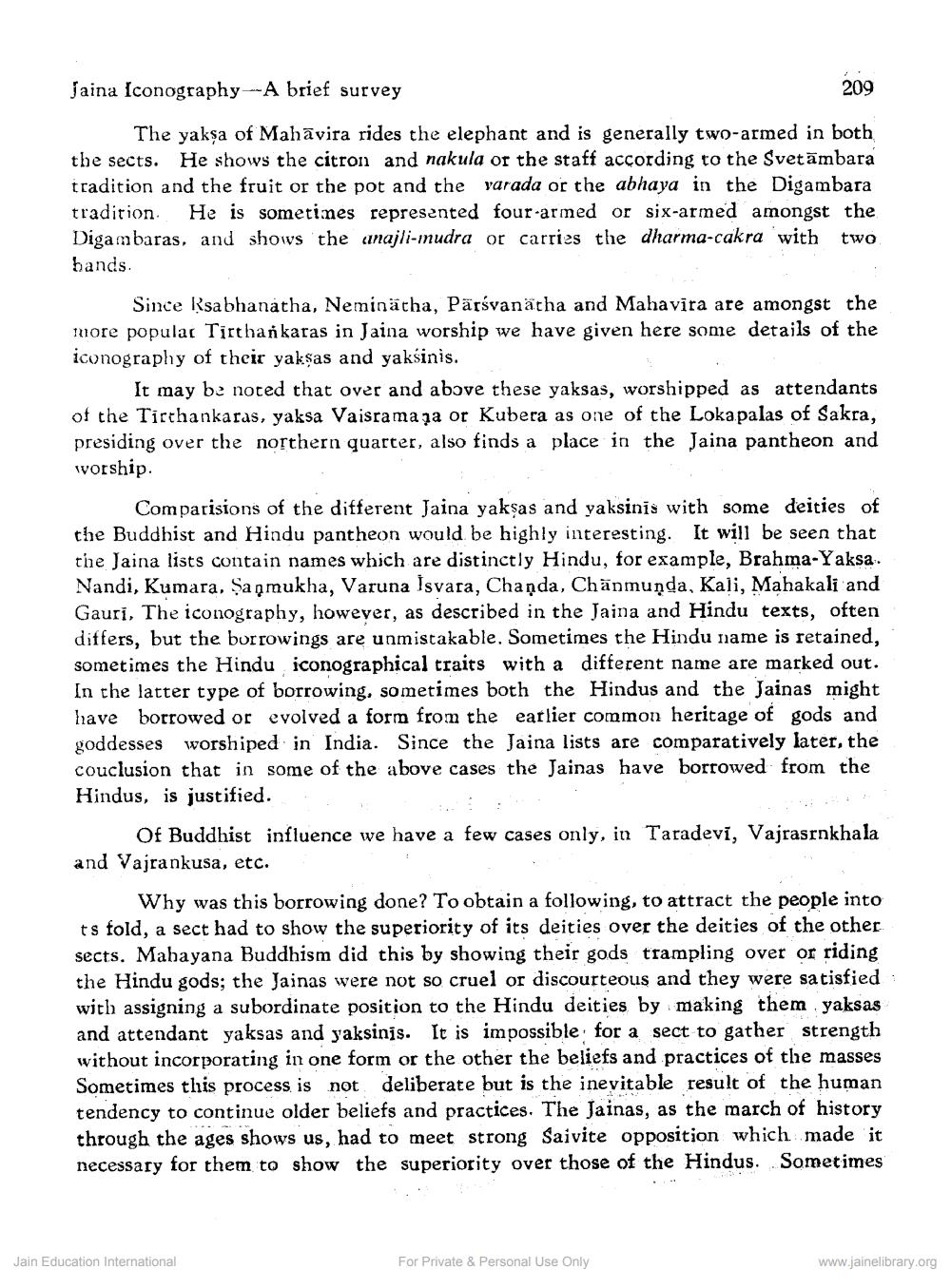________________
Jaina Iconography-.-A brief survey
209
The yakṣa of Mahāvira rides the elephant and is generally two-armed in both the sects. He shows the citron and nakula or the staff according to the Svetāmbara tradition and the fruit or the pot and the varada or the abhaya in the Digambara tradition. He is sometimes represented four-armed or six-armed amongst the Digambaras, and shows the anajli-mudra or carries the dharma-cakra with two bands
Since Rsabhanatha, Neminätha, Pärsvanatha and Mahavīra are amongst the more popular Tirtharkaras in Jaina worship we have given here some details of the iconography of their yakşas and yaksinis.
It may be noted that over and above these yaksas, worshipped as attendants of the Tirchankaras, yaksa Vaisramaja or Kubera as one of the Lokapalas of Sakra, presiding over the northern quarter, also finds a place in the Jaina pantheon and worship.
Comparisions of the different Jaina yakşas and yaksinis with some deities of the Buddhist and Hindu pantheon would be highly interesting. It will be seen that the Jaina lists contain names which are distinctly Hindu, for example, Brahma-Yaksa. Nandi, Kumara. Sanmukha, Varuna Isvara, Chanda, Chänmunda, Kali, Mahakali and Gauri, The iconography, however, as described in the Jaina and Hindu texts, often differs, but the borrowings are unmistakable. Sometimes the Hindu name is retained, sometimes the Hindu iconographical traits with a different name are marked out. In the latter type of borrowing, sometimes both the Hindus and the Jainas might have borrowed or evolved a form from the earlier common heritage of gods and goddesses worshiped in India. Since the Jaina lists are comparatively later, the couclusion that in some of the above cases the Jainas have borrowed from the Hindus, is justified.
Of Buddhist influence we have a few cases only, in Taradevi, Vajrasrnkhala and Vajrankusa, etc.
Why was this borrowing done? To obtain a following, to attract the people into ts fold, a sect had to show the superiority of its deities over the deities of the other sects. Mahayana Buddhism did this by showing their gods trampling over or riding the Hindu gods; the Jainas were not so cruel or discourteous and they were satisfied with assigning a subordinate position to the Hindu deities by making them yaksas and attendant yaksas and yaksinis. It is impossible for a sect to gather strength without incorporating in one form or the other the beliefs and practices of the masses Sometimes this process is not deliberate but is the inevitable result of the human tendency to continue older beliefs and practices. The Jainas, as the march of history through the ages shows us, had to meet strong Saivite opposition which made it necessary for them to show the superiority over those of the Hindus. Sometimes
Jain Education International
For Private & Personal Use Only
www.jainelibrary.org




